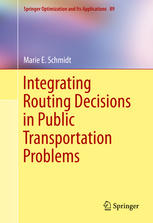

Most ebook files are in PDF format, so you can easily read them using various software such as Foxit Reader or directly on the Google Chrome browser.
Some ebook files are released by publishers in other formats such as .awz, .mobi, .epub, .fb2, etc. You may need to install specific software to read these formats on mobile/PC, such as Calibre.
Please read the tutorial at this link: https://ebookbell.com/faq
We offer FREE conversion to the popular formats you request; however, this may take some time. Therefore, right after payment, please email us, and we will try to provide the service as quickly as possible.
For some exceptional file formats or broken links (if any), please refrain from opening any disputes. Instead, email us first, and we will try to assist within a maximum of 6 hours.
EbookBell Team

4.1
30 reviewsThis book treats three planning problems arising in public railway transportation planning: line planning, timetabling, and delay management, with the objective to minimize passengers’ travel time. While many optimization approaches simplify these problems by assuming that passengers’ route choice is independent of the solution, this book focuses on models which take into account that passengers will adapt their travel route to the implemented planning solution. That is, a planning solution and passengers’ routes are determined and evaluated simultaneously.
This work is technically deep, with insightful finding regarding complexity and algorithmic approaches to public transportation problems with integrated passenger routing. It is intended for researchers in the fields of mathematics, computer science, or operations research, working in the field of public transportation from an optimization standpoint. It is also ideal for students who want to gain intuition and experience in doing complexity proofs and designing polynomial-time algorithms for network problems.
The book models line planning, timetabling and delay management as combined design and routing problems on networks. In a complexity analysis, the border between NP-hard and polynomially solvable problems is illustrated. Based on that, the insights gained are used to develop solution approaches for the considered problems. Besides integer programming formulations, a heuristic method iterating planning and routing step is proposed to solve the problems.